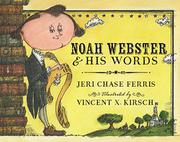The last two years I have been trying to find new non fiction titles to share with my third grade class. Nic Bishop is my favorite non fiction author. All of his books lend themselves to deep comprehension work. The fascinating facts mixed with important information make all my students love them. His photography is amazing!
This is a great book about homes around the world. We had great discussion about cultural differences using this book.
I love biographies. These biographies got my class discussing theories about the "characters" and inspired us as well!
The two titles below are great pairs for non fiction information.
These two titles are also great pairs for history on life out on the west.
